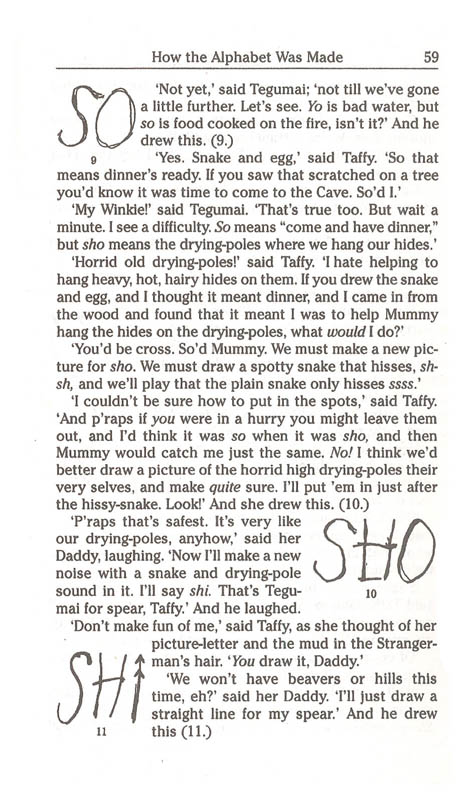

So I wonder to myself, why do The Just So Stories rarely get reprinted? And why do they almost never get new illustrations? The most recent edition I find in my library system is the lovely new Puffin Classics one with an introduction from Jonathan Stroud (who writes of hearing the book, “It is like listening to the chanting of a spell.”). Even when I couldn’t remember the words as an adult, I could remember the rhythm of this sentence, and could find it easily when I looked at the story again. “Still ran Dingo–Yellow-Dog Dingo–hungrier and hungrier, grinning like a horse-collar, never getting nearer, never getting farther and they came to the Wollgong River.”Īlmost like a song to me. Try this next one from “The Sing-Song of Old Man Kangaroo”: Sentences such as this demand that a tongue speak with authority and presence. “Then Kolokolo Bird said, with a mournful cry, ‘Go to the banks of the great grey-green, greasy Limpopo River, all set about with fever-trees, and find out’.” Listen to this line from “The Elephant’s Child” as your example: those were important to me as a kid.įor me, it was all about the language. Now I can take or leave The Jungle Book, but The Just So Stories. The heart and soul of colonialism in India, he also happened to be a darn good writer. Kipling is a difficult fellow to get a grasp on. I was in the library the other day with an editor friend I know and we started discussing The Just So Stories by Rudyard Kipling. Or rather, why don’t they get reprinted with new illustrations all that often?


 0 kommentar(er)
0 kommentar(er)
